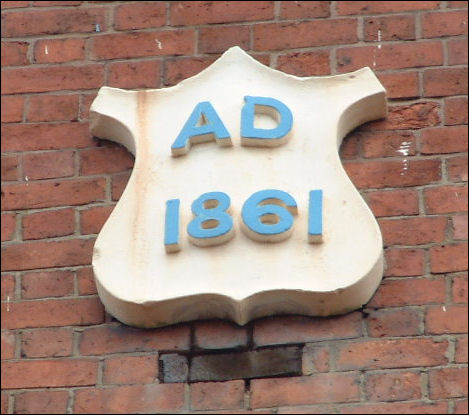![]()
|
|
|
|
|
Stoke-on-Trent - Potworks of the week |

Aynsley's Portland
Works in Sutherland Road, Longton
photos: March 2009

the Portland Works range -
AD1861
|
"In Sutherland Road the Aynsley Pottery, dated 1861 - and yet still entirely the Georgian type. Fifteen bays, the centre the usual archway, one Venetian window, but a tripartite window above it, because the building now is of three, no longer of two floors."
Pevsner: The Buildings of England
|
|
His grandfather, also called John Aynsley, came to the Potteries from Northumberland, became chairman of the Fenton Park Colliery Co., and was afterwards in business as a maker of lustre ware, the first in Longton, in a factory on the site of Longton market. The family fell into reduced circumstances during John Aynsley's childhood, for reasons which are disputed. His mother went to work as a paintress and John Aynsley, after a short education in a dame school, began work at the age of nine, for twopence a day, at John Lockett's factory. Later he was employed in three different factories at the same time, working a 16-hour day. The trade depression of 1848 forced him to seek employment in Derby and the north of England. After some time he returned to the Potteries, acquired an interest in Cooper and Co., worked for Sampson Bridgwood and eventually became the latter's partner. In 1861 John Aynsley built the Portland works in Sutherland Road, Longton which is a late version of the classic Pottery style, with archway, Venetian window and pedimented gable.
John Aynsley also persuaded the duke of Sutherland to give land for the site of a new hospital. He used unorthodox methods of fund raising: he was offered a pig by the landlord of the Trentham Hotel on condition he drove it himself to Longton market; he completed the feat and raised a considerable sum of money in so doing, the duke of Sutherland was one of those heavily engaged in the bet. On another occasion he auctioned a donkey. The donkey died, John Aynsley calcined the bones and had a statue of a donkey made from the remains. The statue was used to collect funds for the cottage hospital for many years.
Pottery works. Largely of 1861. Brick with plain tiled roofs, main range of three storeys and 15 bays, with central pedimented entrance bay with archway through to rear and Palladian style windows over. Cartouche carrying date in the pediment.
Windows have shallow pedimented heads carried on corbels, and continuous
stuccoed sill bands. |